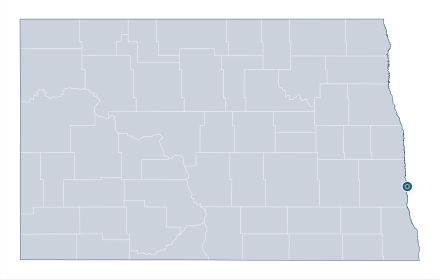North Dakota Advanced Agriculture Technology Engine (North Dakota), led by North Dakota State University, aims to create resilient and secure food systems in North Dakota by combining advanced genomics, climate modeling, nanoscale sensors and computer networks to monitor and improve the growth of crops via strong networks of stakeholders across the state — including bringing tribal, rural and farming communities intentionally and meaningfully into the process of co-creating a blueprint for the future of agriculture and workforce development.
Lead organization: North Dakota State University.
Region of service: North Dakota (entire state).
Competitive advantage: Nearly 90% of North Dakota is farm and ranchlands. Agriculture is the largest segment of the state's economy and is responsible for almost one-fourth of the state's employment. The North Dakota Advanced Agriculture Technology Engine will lead the transition to the next frontier of agricultural technology advances by bringing together a powerful ecosystem of partners with representation from the world's large agricultural companies, technology companies, farmers, universities, regional and statewide economic and workforce development organizations, tribal organizations and innovation testbeds. This NSF Engine's focus on combining advanced crop data, genetic data, climate modeling and sensor technologies will surpass the current state of practice and capabilities, changing approaches to the important challenge of sustainably feeding a nation and the world. Its intentional focus on public crops, historically underinvested but critically important food sources, will catalyze technological advances for climate-resilient crops like peas, edible beans, barley, canola, flax, oats and durum wheat.
NSF award: NSF-2315315
| Key technology areas |
|---|
| Biotechnology, advanced computing and semiconductors, advanced materials, advanced communications, artificial intelligence, data and cybersecurity, disaster prevention and mitigation, robotics and advanced manufacturing. |


